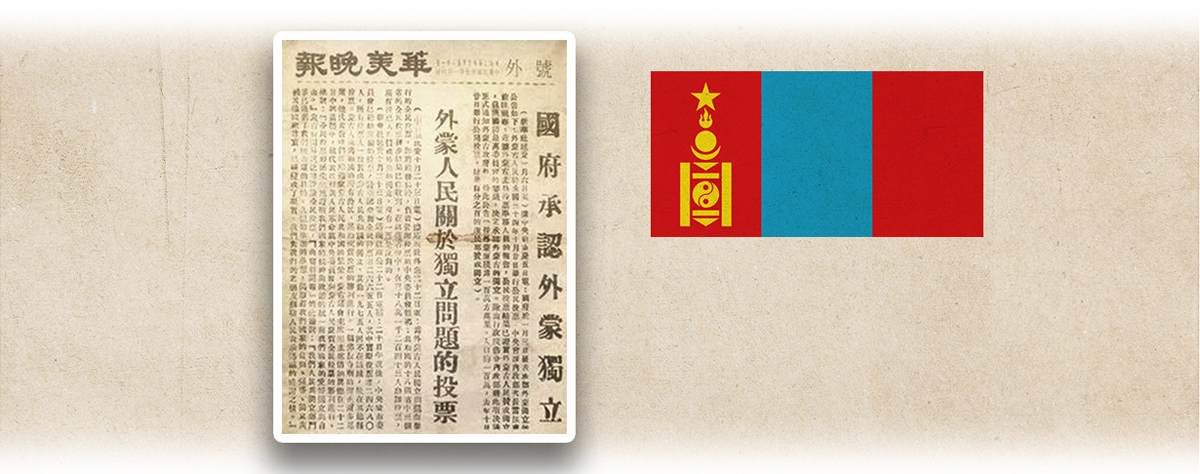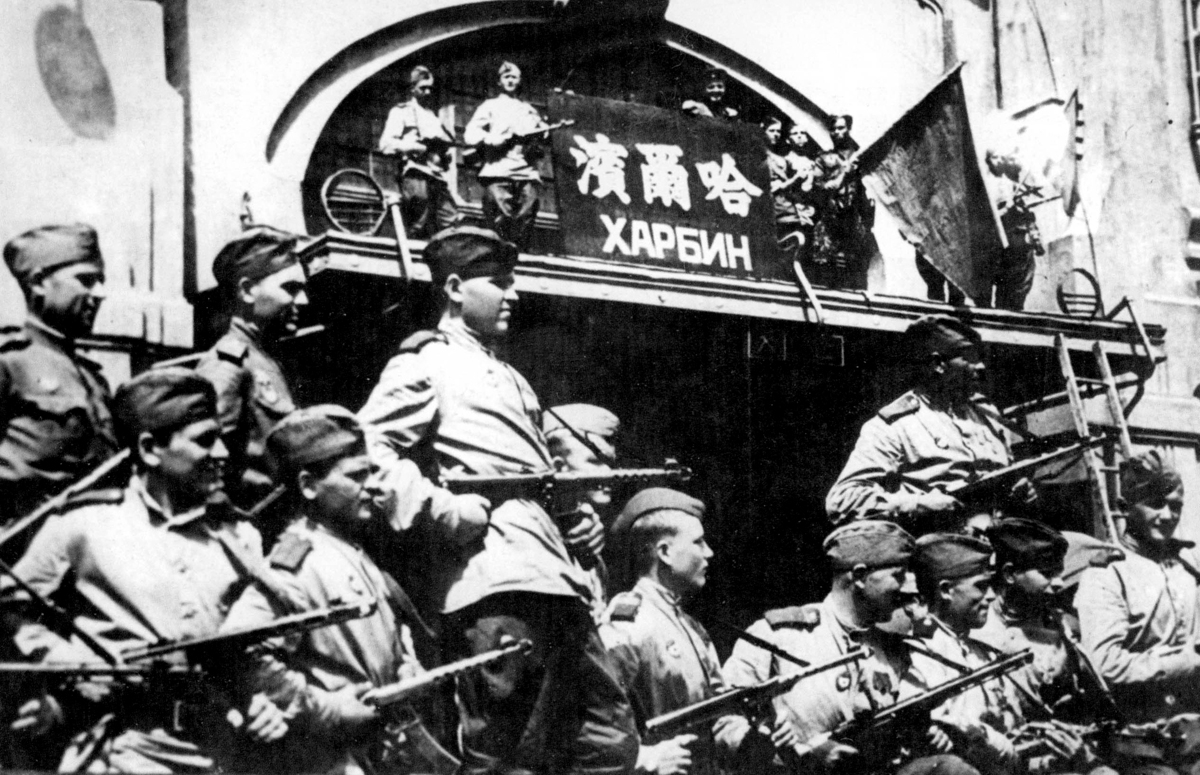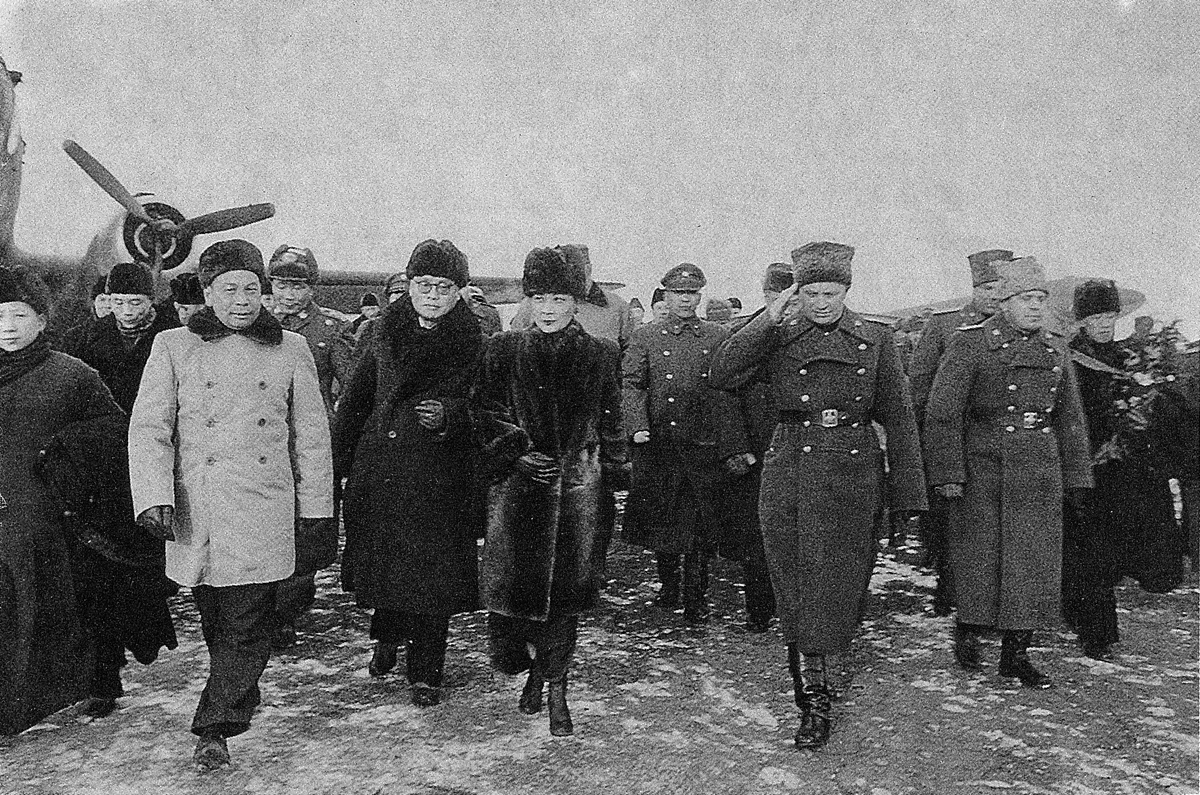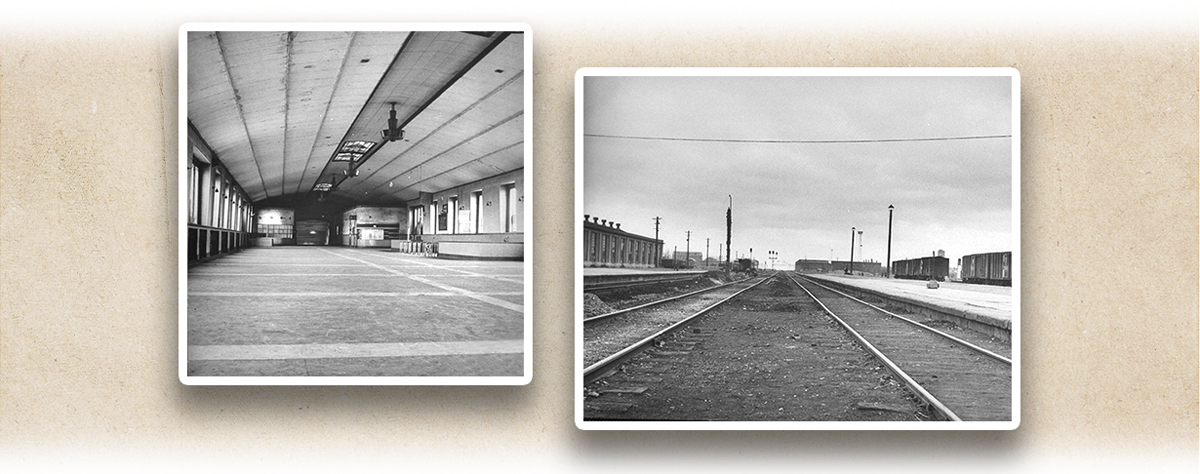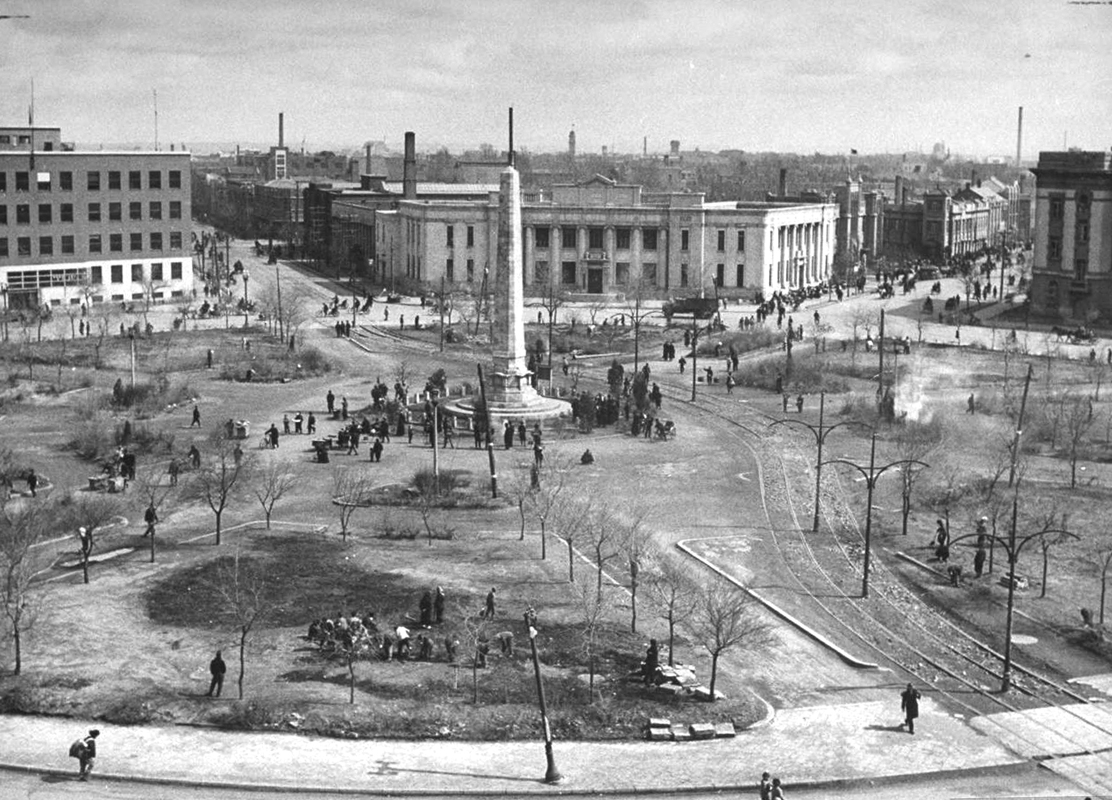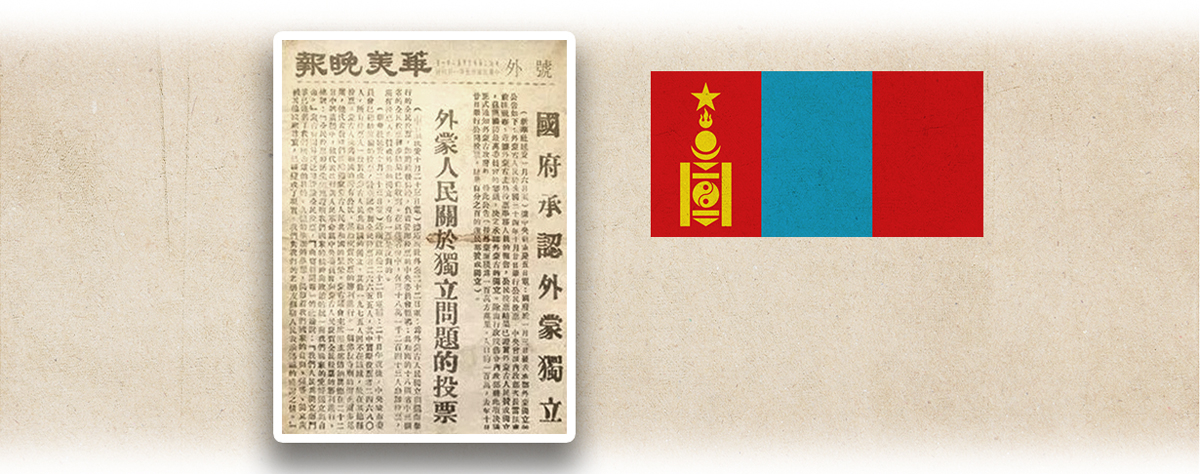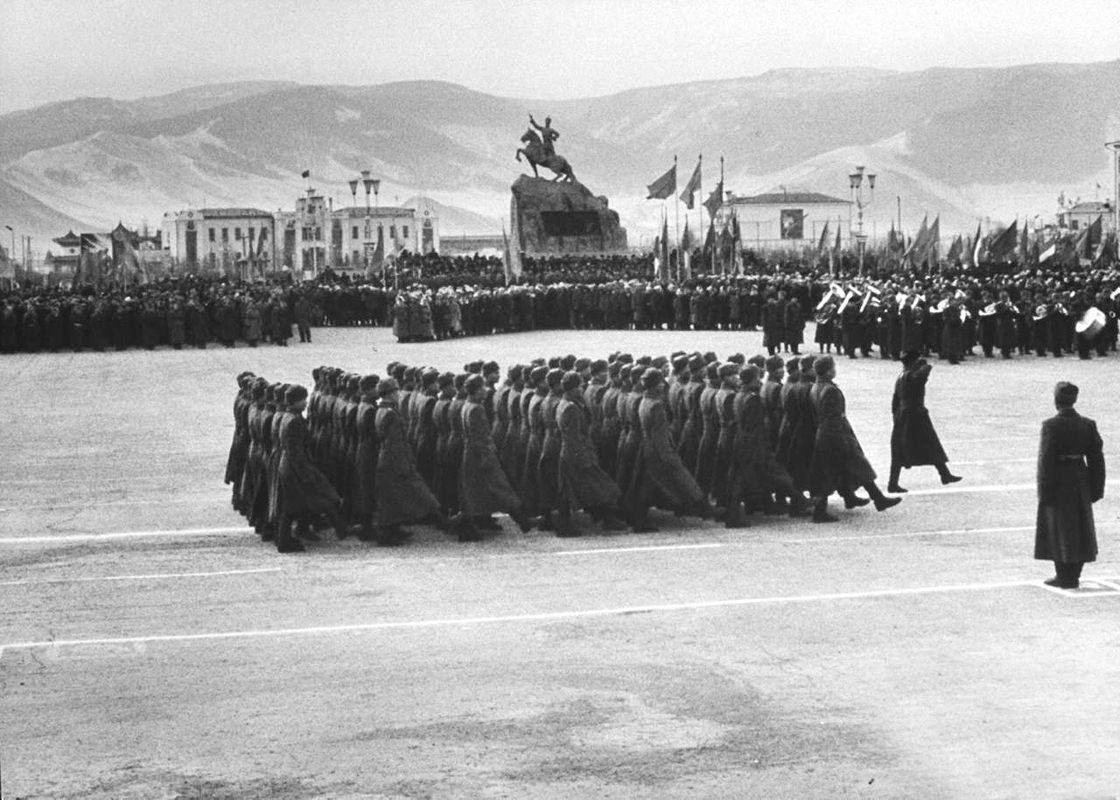The Soviet troops sent to Northeast China in August 1945 soon defeated the Japanese Kwantung Army and occupied the whole Northeast. According to the annex to the Sino-Soviet Treaty of Friendship, Alliance and Mutual Assistance signed on 14 August 1945, the Soviet Union promised to withdraw its troops from the Northeast within three months after the end of the military operations. However, the withdrawal was slightly delayed because it took time to transport the seized Japanese armaments and property back to the Soviet Union. In early 1946, the Nationalist Government also asked the Soviet Union to postpone the withdrawal until its National Revolutionary Army (NRA) arrived to take over the defense. In March the same year, the Soviet ambassador informed the Nationalist Government that all the Soviet troops would withdraw from the Northeast before the end of April, but the NRA was still too shorthanded to garrison the Northeast. Meanwhile, the Soviet Union transferred a large amount of the seized armaments to the Chinese Communist Party (CCP, 中國共產黨).
The post-war Sino-Soviet diplomacy also involved the issue of Outer Mongolia’s independence. The first article of the US-Soviet secret agreement reached at the Yalta Conference in February 1945 stated that the status quo of Outer Mongolia (the Mongolian People’s Republic) should be maintained. It turned out that the Soviet Union’s support for the establishment of the Mongolian People’s Republic in Outer Mongolia dated back to as early as 1924, but its independence was never recognised by the Beiyang Government (北洋政府) or the Nationalist Government. In accordance with the Sino-Soviet Treaty of Friendship, Alliance and Mutual Assistance, both sides agreed to hold a referendum in Outer Mongolia to decide the matter. The majority voted for independence on 20 October 1945, and the Nationalist Government recognised the independence of Outer Mongolia on 5 January 1946.
|
|
How were the relations between the governments of the Republic of China and the People’s Republic of China and the Mongolian People’s Republic? |
|
|
See answer below. |
The 1.5 million Soviet troops that invaded Northeast China on 9 August 1945 quickly defeated 700,000 Japanese Kwantung Army and occupied the whole Northeast China. The photo shows the Soviet troops entering Harbin (哈爾濱) on 19 August 1945 and occupying important facilities including railway stations. In September 1945, the CCP troops entered the Northeast and acquired large quantities of armaments and ammunition from the Soviet Army, which had a great impact on the future KMT-CCP civil war.
The Soviet troops plundered local materials during their occupation of Northeast China. Left: looted shops in Shenyang (瀋陽) were forced to close. Right: the portrait of Joseph V. Stalin, the Supreme Leader of the Soviet Union, hanging in a store. Shops permitted to operate under the Soviet jurisdiction had to hang Stalin’s portrait.
Factories in the Northeast were plundered and destroyed by the Soviet troops during their occupation. Left: a Chinese pot factory stripped bare by the Soviet troops. Right: a large Japanese rubber factory was set on fire after the Soviet troops removed all the machinery and equipment.
According to statistics, the Northeast suffered a massive loss amounted to USD 2 billion in industry alone, and the total value of wealth plundered by the Soviet troops exceeded USD 6 billion during the Soviet occupation. The developed economic construction of Northeast China was severely destroyed by the Soviet looting. In addition, the Soviet troops inflicted suffering to the Northeast people, especially women.
In January 1946, Chiang Ching-kuo (蔣經國, in light colored coat in the front row), the Northeast Special Commissioner of the Nationalist Government, and the Soviet representatives welcoming Chiang Kai-shek’s (蔣介石) wife Soong Mei-ling (宋美齡) at Changchun Airport (長春機場) who came to discuss the Soviet withdrawal.
In March 1946, the US Army coordinating representatives, the Chinese government delegates, and the NRA generals at Shenyang Airport. They were ready to coordinate with the Soviet Army in taking over Shenyang.
In March 1946, the Soviet troops began to withdraw from the Northeast. On 10 March, the Soviet troops were pulled out of Shenyang. The photos show the Shenyang Railway Station after the Soviet withdrawal. The railway could no longer operate properly because the station facilities and sleepers supporting the railway tracks were removed by the Soviet troops.
Shenyang Central Square in May 1946, when the Northeast was taken over by the Nationalist Government.
The Soviet troops withdrew from Shenyang on the night of 10 March 1946, and from other parts of the Northeast successively. The Soviet withdrawal was completed by 3 May 1946, except Dalian (大連) and Lushun (旅順).
The Sino-Soviet Treaty of Friendship, Alliance and Mutual Assistance stipulated that the status of Outer Mongolia should be decided by a referendum. The referendum was held on 20 October 1945, with the majority voting for independence. The photo shows the posters supporting independence and the ballot ticket for the referendum during the voting period.
Left: a newspaper report on the independence of Outer Mongolia. Right: the national flag of the Mongolian People’s Republic used from 1945 to 1992. The Nationalist Government officially recognised the independence of Outer Mongolia on 5 January 1946.
A military parade held in Ulaanbaatar, the capital of the Mongolian People’s Republic, in 1947. With the referendum on Outer Mongolia’s independence and the recognition of its independence by the Nationalist Government, China officially lost its sovereignty over this territory, and the Soviet control over Outer Mongolia continued in the following decades.
|
|
How were the relations between the governments of the Republic of China and the People’s Republic of China and the Mongolian People’s Republic? |
|
|
During the late Qing dynasty (清朝) and the early Republican era, Tsarist Russia and Soviet Russia had been encouraging Outer Mongolia to break away from China. In November 1924, the Mongolian People’s Republic declared independence, which was neither recognised by the Beiyang Government nor the Nationalist Government after the Northern Expedition. On 14 August 1945, the Sino-Soviet Treaty of Friendship, Alliance and Mutual Assistance was signed, in which the Nationalist Government agreed to decide the destiny of Outer Mongolia by a referendum. After the referendum held on 20 October of the same year, the Nationalist Government recognised the independence of Outer Mongolia on 5 January 1946. After its founding in 1949, the People’s Republic of China established diplomatic relations with Mongolia on 16 October, officially recognising the Mongolian People’s Republic. On 12 February 1992, the Mongolian People’s Republic was renamed Mongolia, and its diplomatic relations with the People’s Republic of China maintained. After retreating to Taiwan (台灣), the government of the Republic of China annulled the Sino-Soviet Treaty of Friendship, Alliance and Mutual Assistance in 1953 and derecognised the Mongolian People’s Republic. However, in 2002, it again recognised the independent status of Mongolia. |
Source of most photos used in this feature piece: Fotoe, misc. photo sources.




